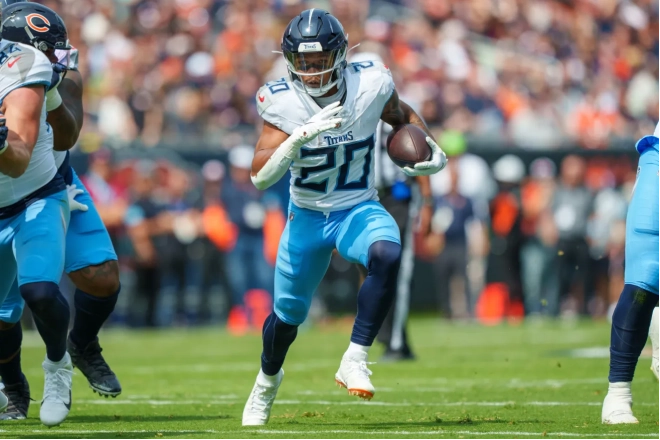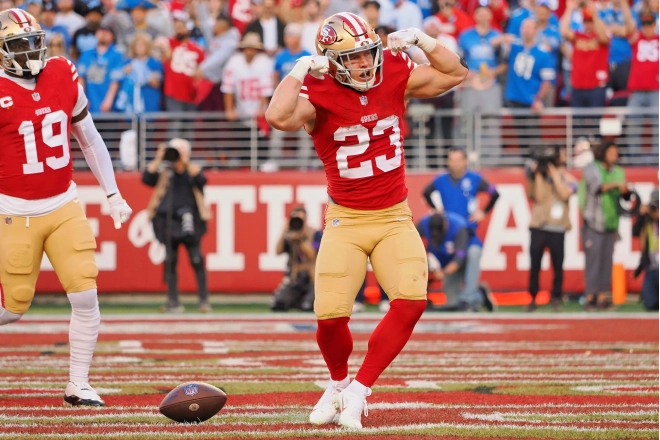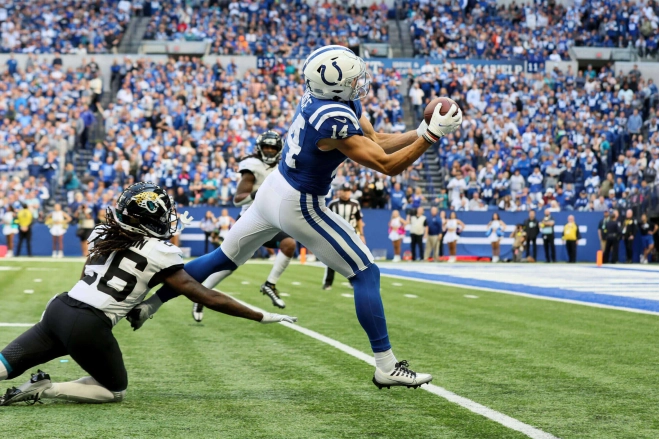As the summer heat intensifies, so does the excitement for dynasty fantasy football managers. July is a critical month in the fantasy football calendar, as it marks the transition from offseason speculation to on-field action. With training camps set to open, it's time to fine-tune your roster, monitor player developments, and position yourself for success in the upcoming season. In this article, we will dive deep into the strategies and tasks you should focus on in July to ensure you're ready for training camp.
Training camp is where the rubber meets the road. It's where players compete for starting roles, rookies make their first impressions, and coaches start shaping their game plans. For dynasty managers, training camp is an invaluable opportunity to gather information that can influence your roster decisions. Here's what you need to pay attention to:
Position Battles
One of the most exciting aspects of training camp is the position battles. These can significantly impact player value and playing time. As a dynasty manager, you should monitor these battles closely to identify potential breakout players or under-the-radar contributors. Here are some key position battles to watch:
Quarterback Competitions: Keep an eye on teams with uncertain quarterback situations. The winner of a quarterback battle can greatly influence the fantasy value of the surrounding skill players. Think teams like New England and Minnesota.
Running Back Rotations: Running back committees are common in the NFL. Pay attention to how teams plan to split carries and which backs are getting first-team reps.
Wide Receiver Depth Charts: The pecking order among wide receivers can change rapidly during training camp. Look for emerging talents who might secure a larger role, and especially pay attention to 2nd & 3rd year receivers with high draft capital, as this could be a make or break year for them. Think someone like Treylon Burks or Alec Pierce.
Tight End Usage: Some teams have tight ends who can become significant fantasy assets if given the opportunity. Track their involvement in offensive schemes.
Rookie Integration
Training camp is the first real test for rookies as they transition from college to the NFL. It's essential to evaluate how quickly they're adapting to the professional level. Here are a few factors to consider:
Draft Capital: High draft picks are usually given more opportunities to succeed. Pay attention to how teams are using their rookies, especially those selected in the early rounds.
Coaching Staff Comments: Coaches often provide insights into a rookie's progress during press conferences and interviews. Positive comments can indicate that a player is on the right track.
Training Camp Performance: Look for reports from training camp that highlight standout performances by rookies. This can give you a sense of their readiness to contribute.
Injury Updates
Injuries are an unfortunate reality of football, and training camp is no exception. Stay updated on injury reports and player recoveries to make informed decisions about your roster. Key considerations include:
Returning Players: Monitor the progress of players returning from injury. Are they participating fully in practice, or are they limited?
New Injuries: Keep track of any new injuries that occur during training camp. This information can impact player value and create opportunities for backups.
Injury-Prone Players: Be cautious with players who have a history of injuries. Training camp performance can indicate whether they've fully recovered or if they're still at risk.
Preparing Your Roster for Training Camp
With the above factors in mind, it's time to prepare your roster for training camp. This involves evaluating your current players, making necessary adjustments, and positioning yourself to take advantage of any opportunities that arise. Here's a step-by-step guide to help you get started:
Evaluate Your Roster
Begin by taking a close look at your current roster. Identify strengths, weaknesses, and areas that need improvement. Consider the following questions:
Do you have enough depth at key positions? Injuries and position battles can impact your starting lineup, so ensure you have reliable backups. Are there any underperforming players from last season? Evaluate whether these players still have potential or if it's time to move on. Do you have any high-upside rookies or young players? These players can provide significant value if they perform well in training camp.
Identify Trade Targets
July is a great time to explore trade opportunities. Look for players who may be undervalued due to offseason uncertainty but have the potential to emerge as valuable assets during training camp. Rookies, backups, and players recovering from injury are all candidates you will want to explore trading for, as they could be cheap to acquire now and could easily provide solid production once the season begins.
Monitor The Waiver Wire
The waiver wire can be a goldmine during training camp. Keep a close eye on player news and reports to identify potential breakout candidates. Players such as camp standouts, injury replacements, and those who have changed positions early in camp can quickly become valuable assets. Be ready to pounce on emerging talents.
Stay Informed
Here are some tips to stay informed during training camp. Staying informed is one of the best ways to dominate July. Don't be afraid to follow the beat reporters, join forums, & use news aggregators to discover the latest news in regards to players you have interest in. Many fantasy sites also update the player news daily, so the opportunity to stay informed is easy.
Key Strategies for Training Camp Success
With your roster prepared, it's time to implement strategies that will give you an edge during training camp. Here are some key strategies to consider:
Track Player Usage
Player usage during training camp can provide valuable insights into their role in the upcoming season. Pay attention to:
First-Team Reps: Players getting first-team reps are likely to have significant roles. Track which players are consistently working with the starters.
Special Teams: Rookies and fringe players often start on special teams. While this may not immediately impact fantasy value, it shows that the coaching staff trusts them.
Red Zone Usage: Players involved in red zone drills are potential touchdown threats. Monitor which players are getting red zone opportunities.
Analyze Preseason Games
Preseason games offer a glimpse of how players perform in live-action scenarios. Use these games to:
Evaluate Performance: Look for players who excel during preseason games. Strong performances can translate to increased roles in the regular season.
Assess Chemistry: Observe the chemistry between quarterbacks and their receivers. This can indicate which players have established connections.
Identify Risers and Fallers: Preseason games can cause players' values to rise or fall. Be ready to adjust your roster based on their performances.
Adjust Your Draft Strategy
If your dynasty league holds its rookie draft in August, training camp insights can help you refine your draft strategy. Consider the following:
Target Training Camp Standouts: Players who perform well in training camp may move up your draft board. Be prepared to adjust your rankings.
Avoid Overreactions: While training camp performance is important, avoid overreacting to small sample sizes. Focus on long-term potential.
Trade Draft Picks: Use training camp information to identify undervalued players. Consider trading draft picks to acquire these players if you believe they have breakout potential.
Monitor Team News
Stay updated on team news and coaching staff comments. These updates can provide valuable information on:
Scheme Changes: Changes in offensive or defensive schemes can impact player roles. Monitor how coaches plan to use their players.
Player Progress: Coaches often provide updates on player progress and development. Positive comments can indicate players who are poised for larger roles.
Injury Reports: Stay informed about injuries and recovery timelines. This information can help you make informed roster decisions.
Evaluating OTA's and Minicamps Insights
While training camp is the main event in July, it's important to reflect on the insights gained from OTAs and minicamps in June. Here's how to evaluate and apply these insights to your dynasty strategy:
Assess Player Progress
OTAs and minicamps provide early indications of player progress. Evaluate how players performed during these sessions to identify potential breakout candidates:
Rookie Performance: Rookies who excelled in OTAs and minicamps are likely to carry that momentum into training camp. Monitor their progress closely.
Returning Veterans: Veterans returning from injury or underperforming in previous seasons may show signs of improvement. Take note of positive developments.
Coaching Comments: Coaches often provide valuable insights during OTAs and minicamps. Look for comments that highlight standout performers. Be careful though to not read too much into the coach comments, as many times "coach speak" doesn't translate into anything once the NFL season begins.
Identify Emerging Trends
OTAs and minicamps can reveal emerging trends that may impact the upcoming season. Pay attention to:
Offensive Schemes: Teams may experiment with new offensive schemes during OTAs and minicamps. Identify players who fit well within these schemes.
Defensive Adjustments: Defensive adjustments can impact player performance. Monitor how teams plan to utilize their defensive personnel.
Positional Changes: Players switching positions during OTAs and minicamps may have increased fantasy value. Track these changes and their potential impact.
Adjust Your Dynasty Strategy
Based on the insights gained from OTAs and minicamps, make necessary adjustments to your dynasty strategy:
Trade Targets: Identify players who showed promise during OTAs and minicamps. Consider acquiring them through trades if their value is still relatively low. Alternatively, don't be afraid to sell on players who are having good camps, especially if they are buried on their team's respective depth charts. The odds of them making an impact during the season are low.
Waiver Wire: If any standout performers are available on the waiver wire, consider adding them to your roster. Early success in OTAs and minicamps can indicate future potential. While this is true, also be wary of players that sign with teams during training camp, as they could be released just as quickly. A good rule of thumb is that if you pick up a player on the waiver wire during minicamps, that player is most likely good trade bait before the start of the season, as demand for said player will most likely never be higher.
Draft Strategy: If you have yet to have your rookie or start-up draft, don't be afraid to adjust your draft strategy based on the performance of rookies and young players during OTAs and minicamps. Target players who have shown early promise. This strategy is no different to many draft strategies earlier in the year. However, many times you will have access to additional information since the camps have started. Therefore, use this to your advantage when possible.
July is a pivotal month in the dynasty fantasy football calendar. By preparing for training camp and leveraging the insights gained from OTAs and minicamps, you can position yourself for success in the upcoming season. Focus on monitoring position battles, tracking player progress, and making informed roster decisions based on training camp developments. Stay proactive, stay informed, and be ready to capitalize on emerging opportunities. Above all, DO NOT OVERREACT, as unless the specific players you follow are out for an extended period of time due to injury, many changes will continue to happen between now and Week 1 of the NFL season. With the right strategies and preparation, you can set the foundation for a triumphant dynasty season.





